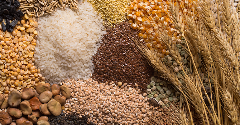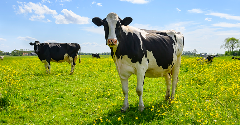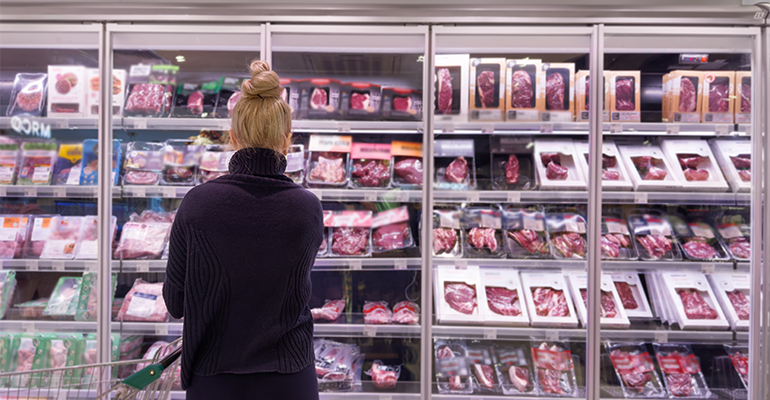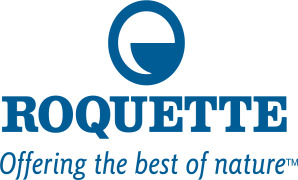News
Industry innovates with new high protein ingredients
26 Aug 2019Consumer interest in high protein foods and drinks continues to grow, and a few enterprising companies have responded to the trend by manipulating protein-rich ingredients to make them even higher in protein.
Protein has been a major trend for the past few years, evolving from the sports nutrition domain into the mainstream. Some are looking for high protein foods to help them feel fuller for longer, while others aim to preserve muscle and bone mass as they age, and increasingly amateur athletes are also seeking out protein for building muscle and for post-exercise recovery. According to Innova Market Insights, the number of new food and drink products with a protein claim doubled from 2013 to 2017, and over 10% of new products now feature some kind of protein claim.

With the rise of protein in nearly every product category, and a rapid increase in high protein NPD, ingredient manufacturers have been ramping up their product development too. Israeli firm Equinom, for instance, has developed non-GMO peas with 50% more protein than standard peas, responding to industry demand for cost-effective alternative protein sources. It is also working on non-GMO soybeans with 50% more protein than commercially available varieties, potentially tapping into a growing market in the United States in particular for soy protein produced without genetic modification.
The company has achieved its high protein ingredients through computerised plant screening, which identifies desirable traits. It then combines this information with traditional breeding techniques, thereby speeding the breeding process significantly. In late 2018, Equinom agreed a partnership with French pea protein supplier Roquette to produce its high protein peas on a commercial scale.
Elsewhere, Protein Industries Canada – a collaborative project between plant protein ingredient producers and the food and feed industries – announced its first investment in July 2019. The group aims to bring new high protein hemp and canola ingredients to the market with up to $153 million of investment over the next four years.
Interest in more natural foods and concerns about the health and environmental impacts of eating too much meat and dairy have led to a strong rise in interest in plant-based proteins. However, innovation in dairy derived proteins is also on the rise. Arla Foods Ingredients, for example, has developed a low volume whey protein ingredient specifically for medical nutrition. According to Innova Market Insights, the number of global medical nutrition beverage product launches featuring whey protein grew an average of 9.9% a year from 2012 to 2017.
Innovation in the protein sector, whether plant-based or animal-derived, is at the crossroads of a number of nutritional trends, such as interest in low carb, keto and paleo diets, the enduring quest for satiety among those seeking to lose weight, and the rise of more serious amateur athletes. The food and beverage industry has accelerated innovation across categories over the past few years, but with new ingredient innovation set to come on line soon, the high protein trend looks set to go from strength to strength.
Related news

Sustainable grains present a healthy growth opportunity
3 Oct 2024
Food insights provider SPINS unveils the latest trends in the sustainable grains field, exploring how seven leading grains show healthy growth despite challenges in the global value chain.
Read more
Will we see a wave of NPD that focuses on insulin management?
1 Oct 2024
As a new study finds protein and fats can help manage insulin, food manufacturers are building on emerging GLP-1 platforms and supporting nutritional guidance.
Read more
New environmental food scoring standards emerge
30 Sep 2024
EIT Food and Foundation Earth collaborate to launch environmental food scoring for products entering the global supply chain.
Read more
Africa progresses with food transformation strategy
19 Sep 2024
Large-scale efforts are underway to drastically change the African food sector with a $61 billion (€55 bn) set of proposed transformation plans to be implemented across forty countries. Yet there are concerns that this initiative severely jeopardises s...
Read more
European Commission releases new supply chain recommendations
6 Sep 2024
The European Union’s (EU) legislative arm publishes its latest guidance on protecting the market’s food supply chain against current and future crises.
Read more
Tesco trials methane mitigation supplement for dairy cattle
5 Sep 2024
Tesco is trialing a methane-reducing feed supplement for one of its key UK dairy farms, sustainable UK milk producer Grosvenor Farms.
Read more
European consumers want more freedom to choose biotech-based food
3 Sep 2024
Survey findings point to growing levels of interest in cultivated meat as European consumers say they want the freedom to choose the lab-based products.
Read more
Will ‘foie gras’ become the EU’s first approved cultivated meat?
20 Aug 2024
French startup Gourmey has submitted its cultivated foie gras for approval in the European Union (EU), signalling the first application of its kind in the region.
Read more
Europe gravitates to African spices
19 Aug 2024
Shipping delays, limited production output and climate change impact Europe’s spice supply, creating opportunities for African brands to enter the captive market.
Read more
Paris Olympics: Food and beverage brands champion health, fun, and sustainability
5 Aug 2024
Food and beverage brands are aligning with the Paris Olympics 2024 Food Vision, which emphasises sustainability, local sourcing, and plant-based diets.
Read more
